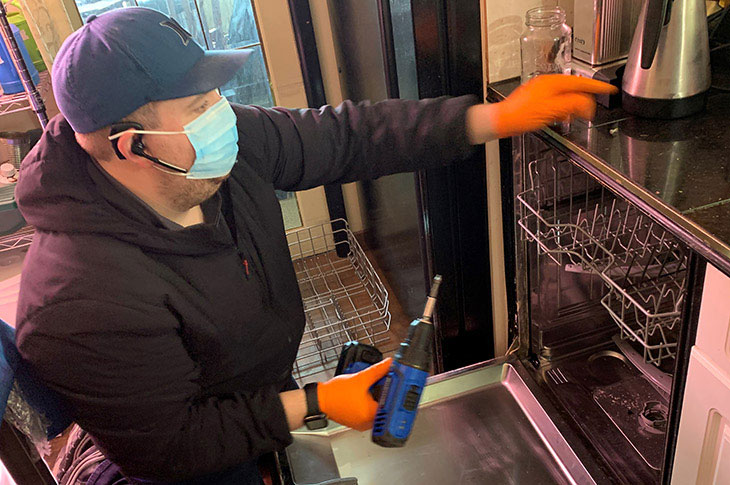It’s safety first for COVID-19 in the appliance repair trade

“I may be late getting there,” says Louis Godor on the phone to a customer. “My mask is broken and I am having trouble getting my hands on another one.”
“Come on over,” says the customer, “We have a couple of extras.”
Issues like broken face masks are part of Godor’s new reality during the COVID-19 pandemic, as he continues to make service calls to people’s homes to fix their fridges, stoves, dishwashers and other modern conveniences.
“I’m using a lot of sanitizing wipes, gloves and masks," says Godor. “When I go into a house, I’m covered in all the personal protective equipment (PPE). When I leave, every tool I've touched, everything that’s been used gets wiped down and put back into the truck. Then I go to my next call and go through the same thing.”
Godor works for Appliance Service Centre, a small Calgary company. He graduated from SAIT’s Appliance Service Technician program in 2015 and has been working more than 10 years as a Journeyman Residential Appliance Technician. He works with another SAIT grad, Terry Klassen who owns the company.
Business has been brisk throughout the pandemic according to Godor. He says it’s because people aren’t going out, so they’re putting more wear and tear on their appliances. “I’m not really working a lot of overtime but I am busy,” he explains. “I generally do eight to ten calls a day. If it takes me four hours to do ten calls, then it takes four. If it takes ten, then I work ten hours. I start in the morning and I go until I’m done. I’m working full and long days like I always do.”
Godor says when appointments are arranged, customers are asked a series of questions — most importantly, is anyone sick in the house and is anyone quarantined. If so, he won’t go, at least not until it is safe. And when he does go to a call, he always follows physical distancing rules and dons protective gloves and a mask.
A visitor in many houses each day, he remains somewhat worried about getting the virus, especially because he has a wife and two small children. But he says he will continue to work and he is confident in the care he takes with PPE and the screening with his clients.
“A lot of it comes down to trust between you and your customers,” says Godor. “When we go into a house we're asking customers to trust us to fix their appliances. So we're basically asking them to make it safe for us to go inside.”
Find out more about SAIT’s everyday heroes – the front-line alumni, instructors, employees and students using their skills to make a difference.

Oki, Âba wathtech, Danit'ada, Tawnshi, Hello.
SAIT is located on the traditional territories of the Niitsitapi (Blackfoot) and the people of Treaty 7 which includes the Siksika, the Piikani, the Kainai, the Tsuut’ina and the Îyârhe Nakoda of Bearspaw, Chiniki and Goodstoney.
We are situated in an area the Blackfoot tribes traditionally called Moh’kinsstis, where the Bow River meets the Elbow River. We now call it the city of Calgary, which is also home to the Métis Nation of Alberta.